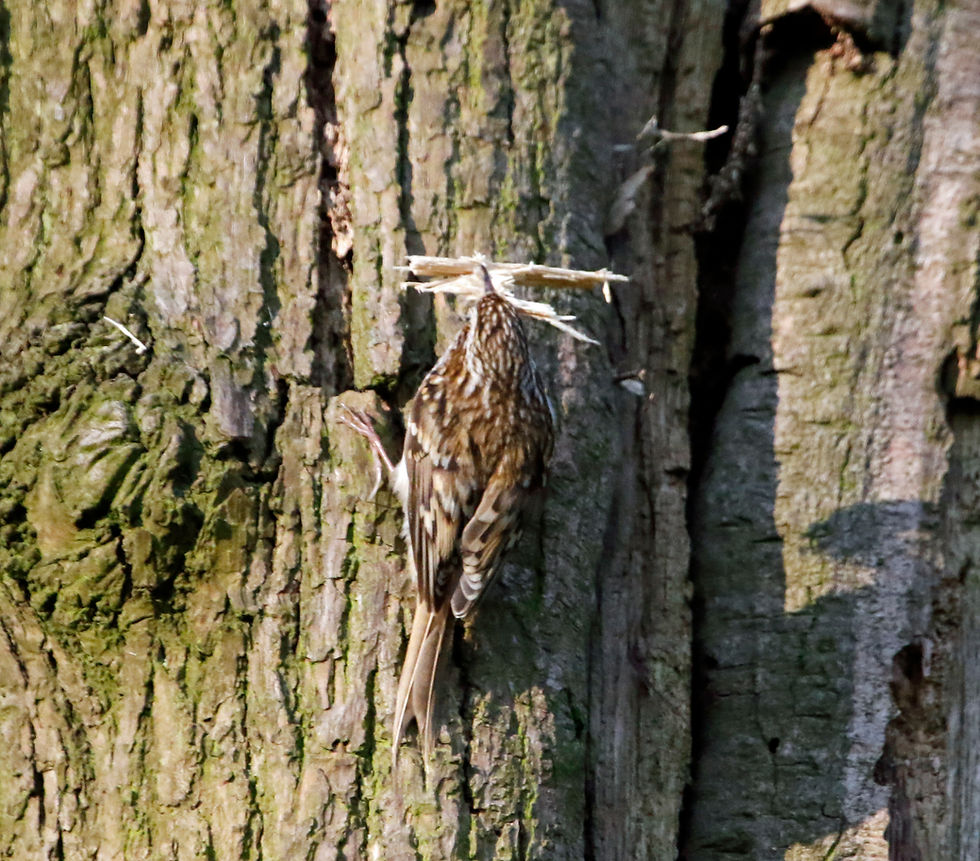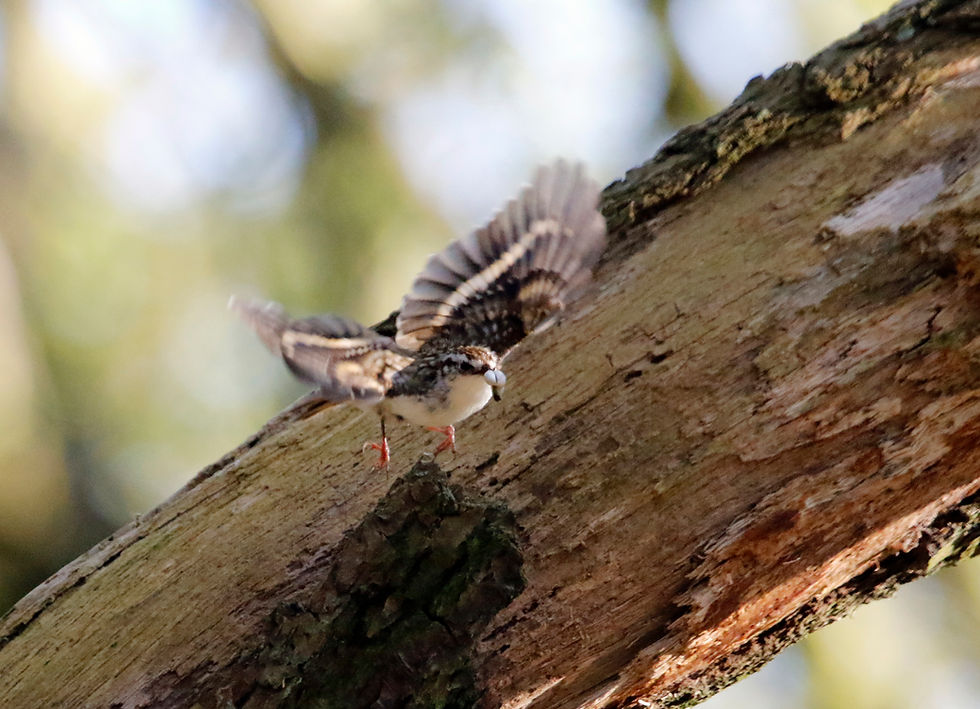Watching Treecreepers.
Last year whilst watching the woodpeckers nesting I noticed lots of treecreepers flitting around and I decided that this year I would try and find a treecreeper nest to watch. It took me a little while but not only did I find an active one I also watched another being built.
When people ask me what I’m photographing and I tell them, almost everyone says they’ve never seen a treecreeper. But they’re not as rare as you think, they’re just incredibly hard to spot. About the size of a wren with a long tail and down curved bill they are perfectly camouflaged for life in a wood blending perfectly against the trunk of the trees.

When it comes to building a nest they don’t take the easy option and head for a knothole in a tree but they look for a flap of bark with room behind to build the nest. The nest is built with twigs and wood chip as in this picture and is then lined with moss, lichen, hair and feathers and takes around a week to complete.

As they can lay between 5 and 6 eggs the nest area will tend to have a seperate entrance and exit as the nest space will become crowded as the chicks hatch and grow.
A week later and it would seem the eggs have been laid as one bird was flying back with food and feeding it to the sitting bird who would emerge to take the food.

The nesting bird would open its mouth to be fed before then flying off and leaving the other bird to take over sitting on the nest.

The second nest I found obviously had chicks, as the parents were constantly in and out with beaks full of insects. They flew in at one end of the hanging bark and emerged from the other usually depositing faecal sacks before heading off to forage more food.

The faecal sack is a mucous covering around the chicks waste which allows the parents to easily remove it from the nest and keep the nest area clean. They were delivering a wide array of different insects to the chicks.

This nest must have been very close to fledging as a couple of days later when I returned there was no sign of any activity, which after the constant delivery of food earlier suggests the young had successfully left the nest. The second nest is now the focus of my attention hopefully to see lots of food deliveries, and fingers crossed the fledging of the chicks.
















